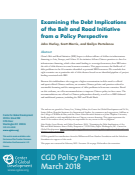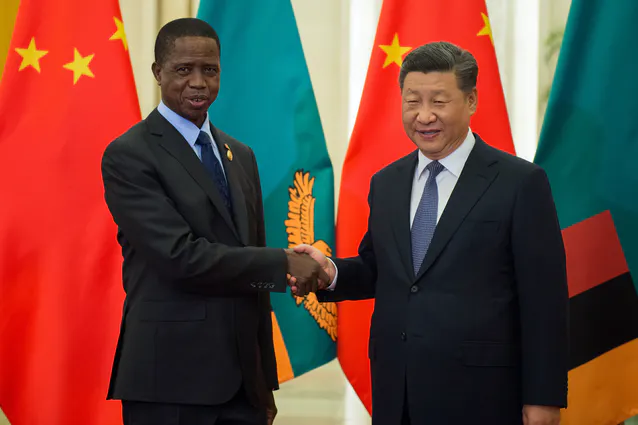

China: Lending to developing countries: Provisions in favor of their own country
[Dakar March 31 Reuters]
China’s loan agreements for developing countries have characteristics such as “priority is given to confidentiality and repayment to Chinese state-owned banks.”
It was revealed in a research report published on March 31st.
William and Mary University:
Think tank, aid data:Washington World Development Center (CGD)
Peterson Institute for International Economics,
German Keel Institute,
We compared 100 loan agreements for 24 low- and middle-income countries in China with those of other major creditors and tried to evaluate them from a legal point of view.Investigate Chinese loan agreement terms:
As a result, it became clear that China’s loan contracts include features such as “contains rules that increase the possibility of repayment of funds.”
In particular,
There is a “confidentiality clause that prevents borrowers from disclosing loan terms.”
There is an “informal collateral arrangement in which the Chinese side is given preferential treatment over other creditors.”
“The Chinese side has the discretion to withdraw loans and accelerate the collection of funds.”
Report co-author:
CGD’s Scott Morriss:China has agreed as a G20 member on a “common framework for reducing debt in developing countries.”
However, in this survey, he pointed out that “the role of China as a G20 member has been questioned.”
Promise of G20 common framework
The G20 common framework states that “all creditors, including the private sector, should be treated equally” in order to reduce debt in developing countries.
However, China has banned “coordination with other creditors and restructuring of loans on equal terms” in most of the contracts surveyed.
At this time, no comment has been received from the Chinese Ministry of Foreign Affairs.
Research / Reuters
https://www.reuters.com/article/china-emerging-debt-idJPKBN2BN11U
China: Loans use secret clauses: Inequality contracts with developing countries
China’s loans to developing countries:
When China lends to developing countries, it has become clear that it “uses a lot of secret clauses that are favorable repayment conditions for China.”
The background is that, as the growth of the Chinese economy slowed down, “the emphasis on debt collection has come to be emphasized even in foreign loans.”
China’s dominant lending agreement makes debt restructuring in developing countries in a “debt trap” difficult.
US Aid Data Report:
On March 31, the US research institute Aid Data released a report.
China’s foreign lending has received international criticism, saying that the contract details are unclear.
“China’s loan terms are unclear”:
It is rare that the actual situation of individual contracts becomes clear.
We have obtained and analyzed 100 loan agreements that have been implemented for 24 countries over the past 20 years.
The total amount is 36.6 billion dollars (about 4 trillion yen).
It also includes loans to Argentina and Ecuador, which have fallen into default in 2020.
Confidentiality clause of loan terms:
According to the report
Investigate loans from China Development Bank and China Export-Import Bank since 2015.
Confidentiality clauses were attached to all loan terms to developing countries.
Nihon Keizai Shimbun
https://www.nikkei.com/article/DGXZQOCB011W20R00C21A4000000/
Examining the Debt Implications of the Belt and Road Initiative from a Policy Perspective John Hurley, Scott Morris, and Gailyn Portelance
Abstract
China’s Belt and Road Initiative (BRI)
hopes to deliver trillions of dollars in infrastructure financing to Asia, Europe, and Africa.
If the initiative follows Chinese practices to date for infrastructure financing, which often entail lending to sovereign borrowers, then BRI raises the risk of debt distress in some borrower countries.
This paper
assesses the likelihood of debt problems in the 68 countries identified as potential BRI borrowers.
We conclude that
eight countries are at particular risk of debt distress based on an identified pipeline of project lending associated with BRI.
Because this indebtedness
also suggests a higher concentration in debt owed to official and quasi-official Chinese creditors, we examine Chinese policies and practices related to sustainable financing and the management of debt problems in borrower countries.
Based on this evidence,
we offer recommendations to improve Chinese policy in these areas.
The recommendations
are offered to Chinese policymakers directly, as well as to BRI’s bilateral and multilateral partners, including the IMF and World Bank.
The authors
are grateful to Nancy Lee, Visiting Fellow, the Center for Global Development and Ye Yu, Senior Fellow, Shanghai Institutes for International Studies, for comments and suggestions.
AidData at the College of William & Mary and the China-Africa Research Initiative at Johns Hopkins University
kindly provided us with unpublished data on Chinese overseas financing.
This paper
represents the views of the authors alone, and they are responsible for any errors in fact or judgment.
John Hurley, Scott Morris, and Gailyn Portelance. 2018.
“Examining the Debt Implications of the Belt and Road Initiative from a Policy Perspective.” CGD Policy Paper. Washington, DC: Center for Global Development.
CGD is grateful for contributions from the William and Flora Hewlett Foundation and the Lakeshore Foundation in support of this work.
This paper was corrected in February 2021.